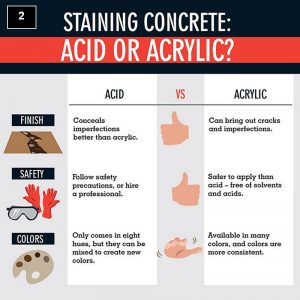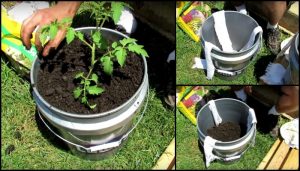
Welcome to the heart of your home – the doors. Often overlooked, these silent sentinels play a pivotal role in safeguarding your haven. This comprehensive manual is your key to mastering the art of basic door repairs and upkeep.
Say goodbye to squeaks, misalignments, and weathered appearances as you embark on a journey to transform your doors into resilient, functional, and aesthetically pleasing features of your home.
Contents [show]
Assessing Your Doors
Before diving into door repairs, understand the intricacies of your doors. From hinges and doorknobs to locks and weather stripping, this serves as your compass in the world of door anatomy.
Become a door detective by learning to identify common door repair requirements such as squeaky hinges, misalignments, and drafts. Early detection is the key to nipping potential problems in the bud.
Squeaky Hinges
Your first assignment as a door detective involves the investigation of squeaky hinges. Sharpen your auditory senses and be on the lookout for subtle auditory cues—a distinct creak or groan as the door swings.
These audible distress signals often point to friction within the hinge mechanism. Arm yourself with a premium lubricant, your trusty detective’s oil, to silence these unwelcome sounds and restore the smooth operation of hinges.
Regular maintenance, featuring periodic cleaning and lubrication, emerges as your preventive measure, ensuring a quiet and efficient performance from your door’s hinges.
Misalignments
The detective journey continues with a close examination of misalignments, those inconspicuous anomalies that can disrupt the seamless closure of doors. Scrutinize for signs—a door that hesitates to snugly fit into its frame, irregular gaps, or uneven spacing.
Misalignments may stem from loose hinges, shifts in the building’s structure, or alterations in environmental conditions. Armed with a discerning eye and a leveling tool, you can rectify these discrepancies through door repair – adjusting hinges, tightening screws, or realigning strike plates.
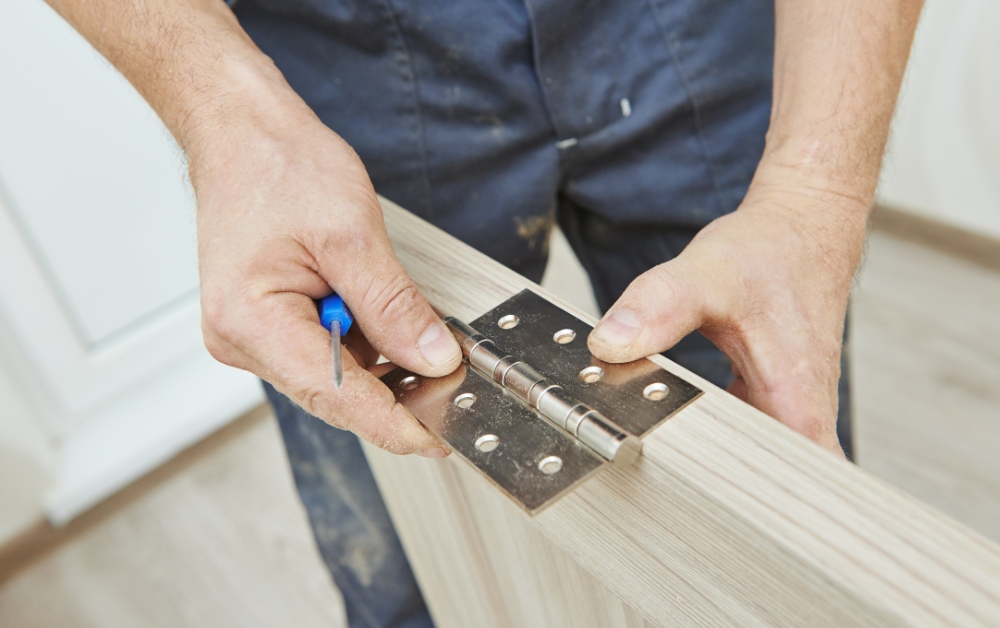
The early detection and door repairs ensure that it maintains both its proper functionality and aesthetic appeal.
Drafts
The final case on your docket involves tracking down drafts, those elusive infiltrators that compromise your home’s energy efficiency. Engage your sensory detective skills—feel for subtle air currents or employ a candle flame to detect irregular air movements around the door’s perimeter.
Drafts often find their way through worn weather stripping, compromised door sweeps, or gaps in the door frame. Counteract these potential entry points by installing fresh weather stripping, replacing ineffective sweeps, and utilizing caulk to seal any gaps in the door frame.
Early detection and mitigation of drafts contribute not only to enhanced energy efficiency but also to the creation of a more comfortable and environmentally conscious living space.
In the intricate world of door repairs and upkeep, the prowess of early detection is your badge of honor as a door detective. Regular inspections and proactive maintenance empower you to intercept potential problems before they escalate, ensuring that your doors operate seamlessly, efficiently, and without any concealed surprises.
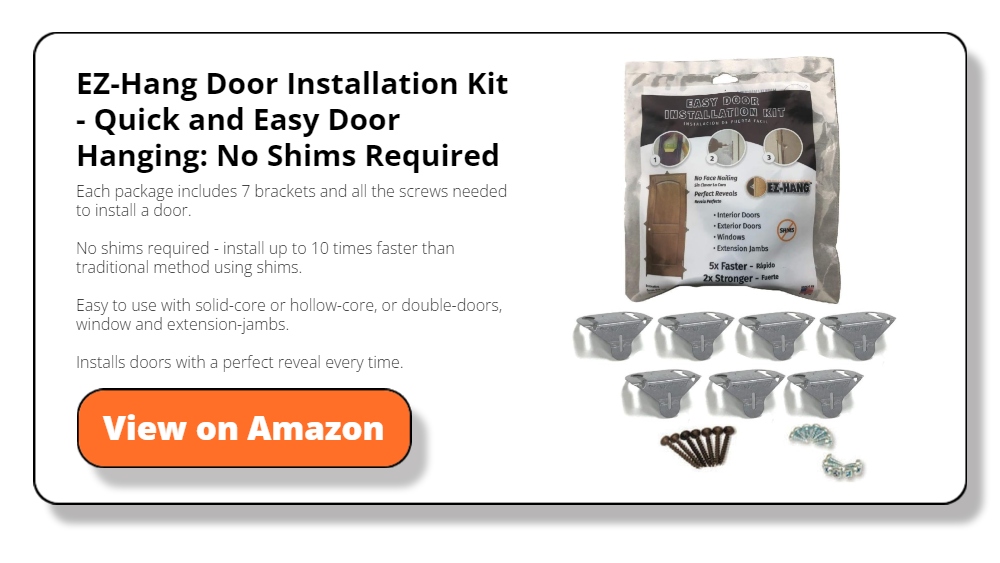
DIY Door Repairs
Silencing Squeaky Hinges
Squeaky hinges can turn the simple act of opening a door into an annoyance. Fear not! Learn how to silence those creaks and restore serenity to your home. Start a fun DIY door repair.
- Gather Your Tools:
- High-quality lubricant (such as silicone-based or graphite lubricant)
- Clean cloth or rag
- Open the Door:
- Fully open the door to expose the hinge.
- Inspect for Dirt or Debris:
- Examine the hinge for any accumulated dirt, dust, or debris. If present, use a clean cloth to wipe away these particles.
- Apply Lubricant:
- Directly apply the lubricant to the hinge pins. Ensure you reach all moving parts of the hinge.
- For a more precise application, you can use a small applicator, like a nozzle or straw attachment that often comes with the lubricant.
- Move the Door:
- Move the door back and forth several times to allow the lubricant to penetrate and coat the hinge components thoroughly.
- Wipe Excess Lubricant:
- Use a clean cloth to wipe away any excess lubricant that may have dripped or spread to surrounding areas.
- Repeat if Necessary:
- If the squeak persists, repeat the process. Sometimes, a second application may be needed for stubborn squeaks.
- Test the Door:
- Close and open the door to ensure the squeaking has been eliminated. The door should move smoothly and quietly.
- Regular Maintenance:
- Schedule regular maintenance by lubricating hinges at least once or twice a year to prevent future squeaks.
Additional Tips:
- Choose the Right Lubricant: Opt for a lubricant specifically designed for door hinges. Silicone-based or graphite lubricants are excellent choices.
- Avoid WD-40 for Long-Term Use: While WD-40 is a common household lubricant, it is more of a cleaner and not ideal for long-term lubrication. Choose a dedicated door hinge lubricant for better results.
- Inspect for Damaged Hinges: If the squeak persists despite lubrication, inspect the hinges for damage. Damaged hinges may need replacement.
Aligning Misaligned Doors
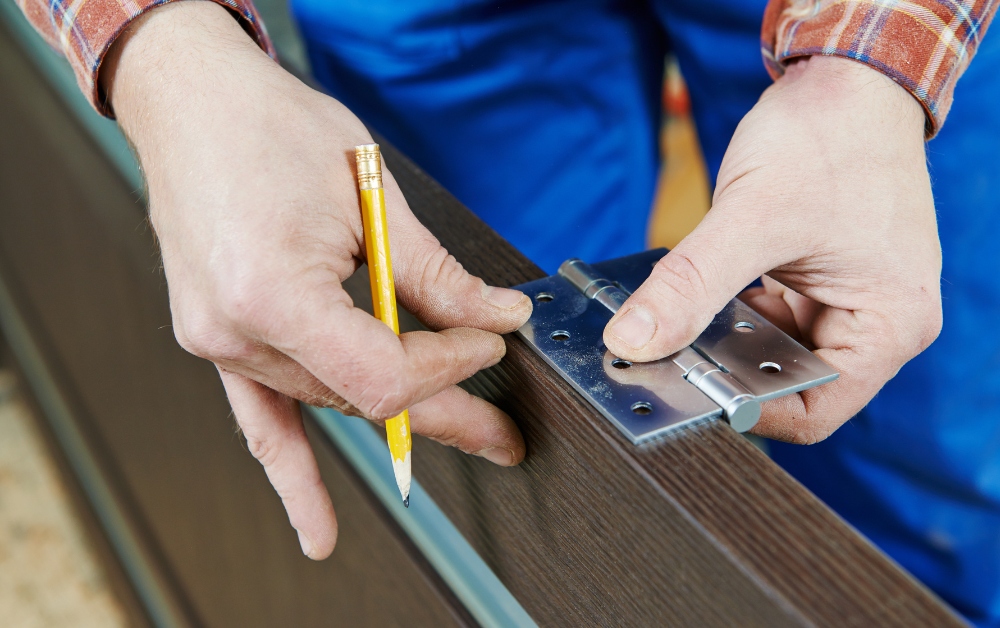
Misaligned doors not only affect the aesthetics but also compromise functionality. Aligning misaligned doors is a task that can restore proper functionality and enhance the overall appearance of your doors. Here’s how to realign a misaligned door.
- Identify the Misalignment:
- Carefully examine the door to identify the nature of the misalignment. Look for uneven gaps around the door frame, difficulty in closing the door, or any visible signs of stress on the hinges.
- Tighten Hinge Screws:
- Using a screwdriver, tighten all screws on the hinges. Loose screws are a common cause of misalignment, and a simple tightening might resolve the issue.
- Adjust Hinges:
- If tightening screws doesn’t resolve the problem, try adjusting the hinges. Loosen the screws slightly, reposition the door by pushing or pulling it to the desired alignment, and then tighten the screws again.
- Check for Sagging:
- If the door is sagging, causing misalignment, you may need to adjust the hinge mortises. To lift a sagging door, place a wedge or shim underneath the door until it’s level, then tighten the screws.
- Use a Level:
- Place a level against the door to check for vertical and horizontal alignment. Make adjustments as needed, focusing on achieving an even and balanced position.
- Check the Strike Plate:
- Ensure that the strike plate on the door frame aligns properly with the door latch. If necessary, adjust the strike plate by moving it slightly to improve alignment.
- Inspect the Door Frame:
- Examine the door frame for any warping or damage that may contribute to misalignment. If the frame is damaged, repairs or replacement may be necessary.
- Consider Adding Shims:
- To fine-tune the alignment, you can insert shims between the hinges and the door frame. Shims can help adjust the angle and positioning of the door.
- Test the Door:
- Open and close the door several times to ensure that it operates smoothly and aligns correctly. Make further adjustments if needed.
- Repeat if Necessary:
- If the misalignment persists, repeat the process and make incremental adjustments until the door is properly aligned.
Additional Tips:
- Work with a Helper: Enlist the help of someone to hold the door or assist with the door repair. This can make the process smoother and more accurate.
- Patience is Key: Door repairs may require patience and multiple attempts. Take your time to ensure precision.
- Check for Interference: Ensure that the door doesn’t rub against the floor or frame during movement.
If the misalignment persists despite your efforts, consulting an experienced professional in door repairs and upkeep may be necessary, especially if there are underlying structural issues.

Weather Stripping for Energy Efficiency
Take control of your home’s energy efficiency by exploring weather stripping.
Diverse Types of Weather Stripping
- V-Strip Versatility:
- Characterized by its V-shaped vinyl or metal composition, V-strip weather stripping is celebrated for its adaptability. This type of door repair adeptly seals gaps around doors conforming effortlessly to irregular surfaces, and is renowned for its durability.
- Felt Strips:
- Offering an economical solution, felt strips consist of compressed felt material. While not as durable as some alternatives, they prove effective in insulating gaps around doors and are favored for their ease of installation.
- Door Sweeps for Draft Defense:
- Tailor-made for the bottom of doors, door sweeps, typically crafted from aluminium or stainless steel, act as vigilant guards against drafts, dust, and pests. They serve as an effective barrier, preventing air infiltration from beneath exterior doors.
- Adhesive-Backed Foam Tape Ease:
- This user-friendly option features foam or rubber tape with an adhesive backing. Applied easily to doors, it creates a reliable seal. However, with this quick door repair, periodic replacement may be necessary for optimal performance.
Systematic Installation Steps:
- Surface Preparation:
- Begin by ensuring that the surfaces surrounding doors are clean and dry before embarking on the installation process.
- Precision Measurement and Cutting:
- Measure the dimensions of the gaps you intend to seal with meticulous precision. Cut the weather stripping material accordingly to ensure an optimal fit.
- Application of Weather Stripping:
- Affix the weather stripping along the edges of doors, adhering closely to the manufacturer’s instructions. Ensure a secure seal by pressing the material firmly into place.
- Adequacy Check:
- Post-installation, assess the effectiveness of the weather stripping by closing doors, feeling for drafts, and making necessary adjustments to guarantee an airtight seal.
- Routine Maintenance Checks:
- Uphold the integrity of your weather stripping by conducting regular inspections and replacing damaged sections as needed. Proactive door repair and upkeep routines ensure sustained energy efficiency and comfort.
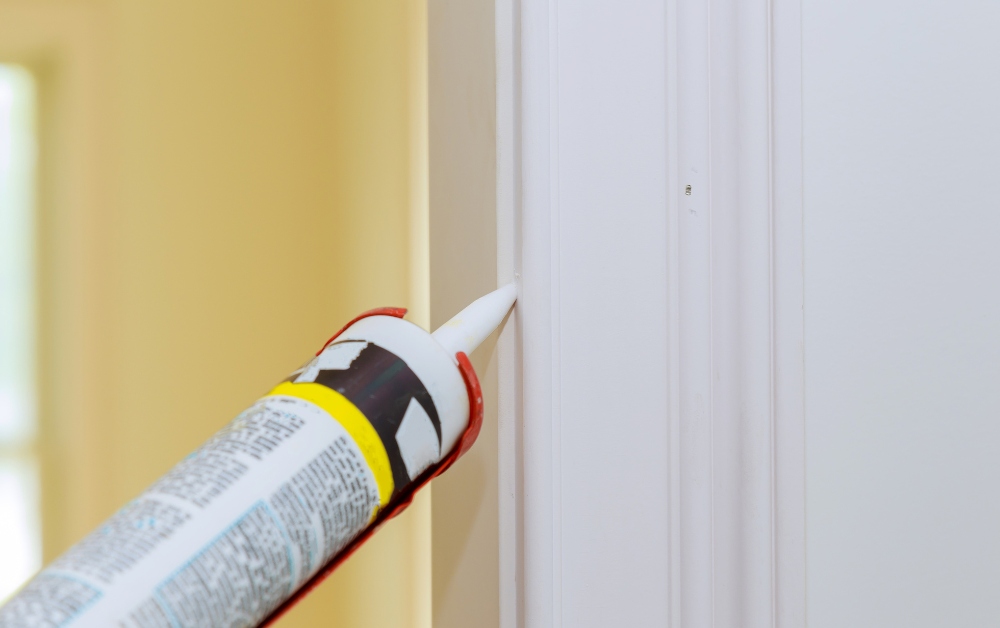
Upkeep and Prevention
Preserving Wooden Doors
Wooden doors are timeless, but they require special care. Delve into the secrets of preserving and restoring wooden finishes, ensuring your doors stand as a testament to classic beauty.
At the heart of this exploration lies the delicate art of selecting the right finishes. Navigate through the myriad options, including traditional varnishes that lend a glossy sheen to the wood and nourishing oils that penetrate the grain, enhancing its natural radiance.
As you traverse the spectrum of traditional varnishes, envisage the timeless elegance they bring to the wooden canvas. These varnishes, with their gleaming finishes, not only serve as protective layers but also impart a classic sophistication to the wood’s surface.
Contrastingly, immerse yourself in the world of nourishing oils, where the emphasis shifts from a polished exterior to an intimate connection with the wood’s inner soul. Picture these oils as elixirs, seeping into the grain, enriching the fibers with a subtle glow that emanates from within.
Maintaining Metal and Glass Doors
For those with a taste for modernity, maintaining metal and glass doors is an art. Discover cleaning techniques and protective measures to keep these contemporary features gleaming and stylish.
Initiate your quest by immersing yourself in specialized cleaning techniques tailored to the diverse materials that define contemporary elegance. Whether it be the polished allure of metallic finishes, sleek surfaces of glass, or the avant-garde composite materials adorning your space, delve into the nuanced art of maintaining their flawless appearance.
Embrace the efficacy of microfiber cloths, curated cleansers, and methods attuned to the unique attributes of each material, ensuring a meticulous and effective cleaning regimen that pays homage to the integrity of these modern elements.
Venture beyond mere cleanliness into the realm of preservation, where strategic protective measures are key to perpetuating the allure of contemporary features. Explore advancements in coatings and sealants, engineered to shield surfaces from the rigors of daily use.
Intermittent Door Repairs
Sticking Door Repairs
When a door starts resisting, it’s time for next-level troubleshooting. Properly diagnose and address sticking doors, ensuring they continue to operate smoothly.
Seek out any irregularities, such as protruding screws or subtle shifts resulting from settling in the building structure, that might be impeding the door’s fluid motion. This meticulous evaluation sets the stage for a precise diagnosis that goes beyond surface-level observations.
Armed with a comprehensive understanding of the diagnostic findings, tailor your door repairs to the specific issues at hand. Whether it involves meticulous sanding of door edges, tightening of loose screws, realignment of hinges, or a combination of these interventions, each action is a calculated step towards the restoration of the door’s harmonious operation.

Door Repairs – Handles or Locks
Upgrade your home’s security and aesthetics by confidently replacing door handles or locks. This advanced step not only enhances protection but also gives your doors a fresh, modern appeal.
Visualize the doors adorned with finishes that exude a subtle elegance or are imbued with textures that invite tactile exploration. The marriage of enhanced protection and modern aesthetics creates a harmonious synergy, where form seamlessly aligns with function, elevating the overall appeal of your doors.
The Wrap Up
Congratulations! You’ve now graduated from this homeowner’s manual, armed with the knowledge to handle basic door repairs and upkeep. Your doors are no longer mere barriers; they are statements of style, security, and comfort.
Take proactive door repairs and maintenance to ensure they stand the test of time. With this newfound knowledge of door repairs and upkeep, you have the power to transform your home’s entrances into showcases of functionality and elegance.
Remember, a well-maintained door is not just a physical boundary – it’s an invitation to a welcoming and secure home.
Frequently Asked Questions
1. How frequently should door repairs and maintenance be done?
Check every six months, address issues promptly, lubricate hinges annually, and refinish wooden doors as needed.
2. When should door hinges be lubricated?
Lubricate door hinges annually or as needed. Use a silicone-based lubricant or other recommended products.
3. What should you do if your door does not latch properly?
Check for misalignment or loose screws on the strike plate. Adjust the plate’s position or tighten screws for the latch to work correctly.





